
The Berenstain Bears Chapter Book: Accept No Substitutes
¥21.73
When Brother Bear's teacher is away, all of the cubs in class decide that it's more fun to spend the day playing pranks on the substitute teacher than doing work! But when the pranks get to be more and more troublesome, Brother finds himself in a sticky situation. Will Brother be able to stop the big prank and save the substitute before it's too late?

The Berenstain Bears Chapter Book: The G-Rex Bones
¥21.51
Something strange is afoot at the museum, and the cubs are out to solve the mystery! With the help of Professor Actual Factual, the Bears must find the culprit who planted fake fossils at the museum and recover the missing bones! But with Dr. Zoltan Bearish hot on their trail, the cubs may be in for more of an adventure than they bargained for.

The Berenstain Bears Chapter Book: Queenie's Crazy Crush
¥21.51
When Too-Tall, the town bully, discovers that his main squeeze, Queenie, is crushing on another cub, he sets out to find the culprit. But could it be that the answer is not what Too-Tall bargained for?
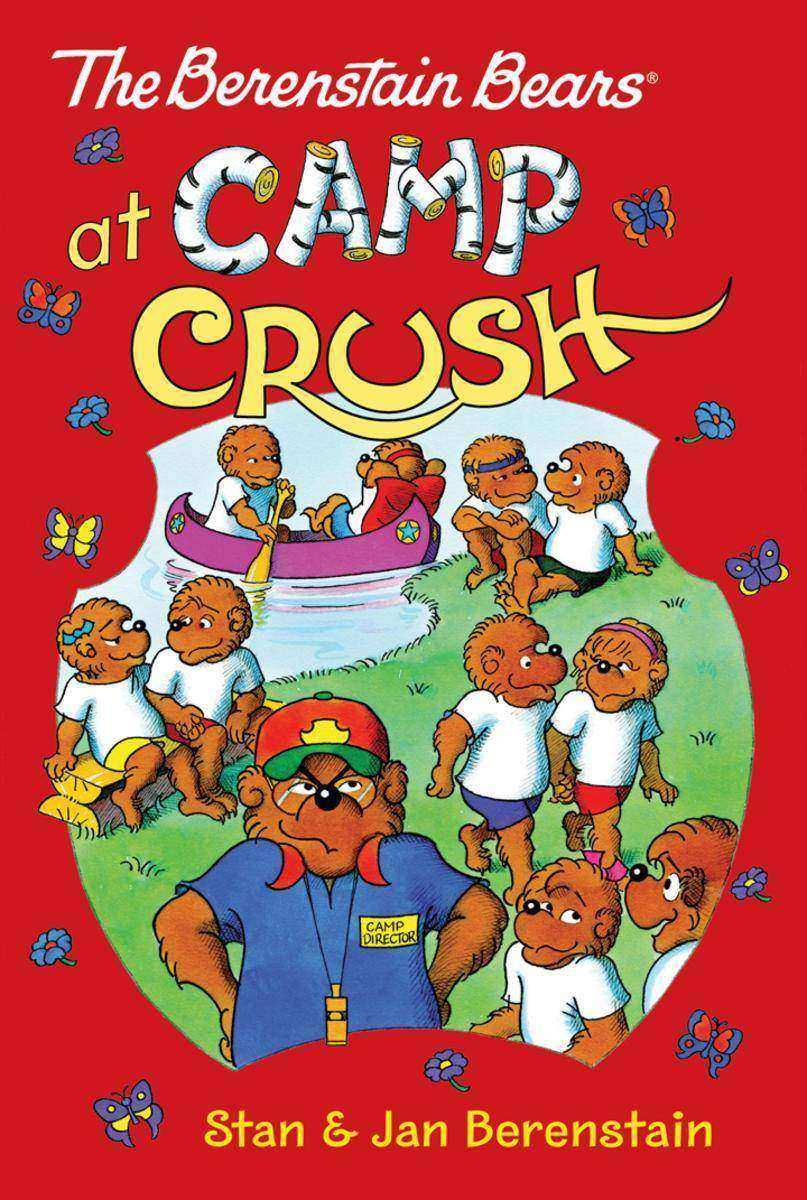
The Berenstain Bears Chapter Book: Camp Crush
¥21.73
When Brother and Sister Bear decide to go to Camp Grizzmeyer for the summer, they expect to have a great time swimming, canoeing, playing tennis, and doing arts and crafts. What the bear cubs don't bargain for is the eerie romance in the air that keeps drawing the boy and girl campers together!The Berenstain Bears Chapter Books are the perfect next step for increasingly independent young readers.
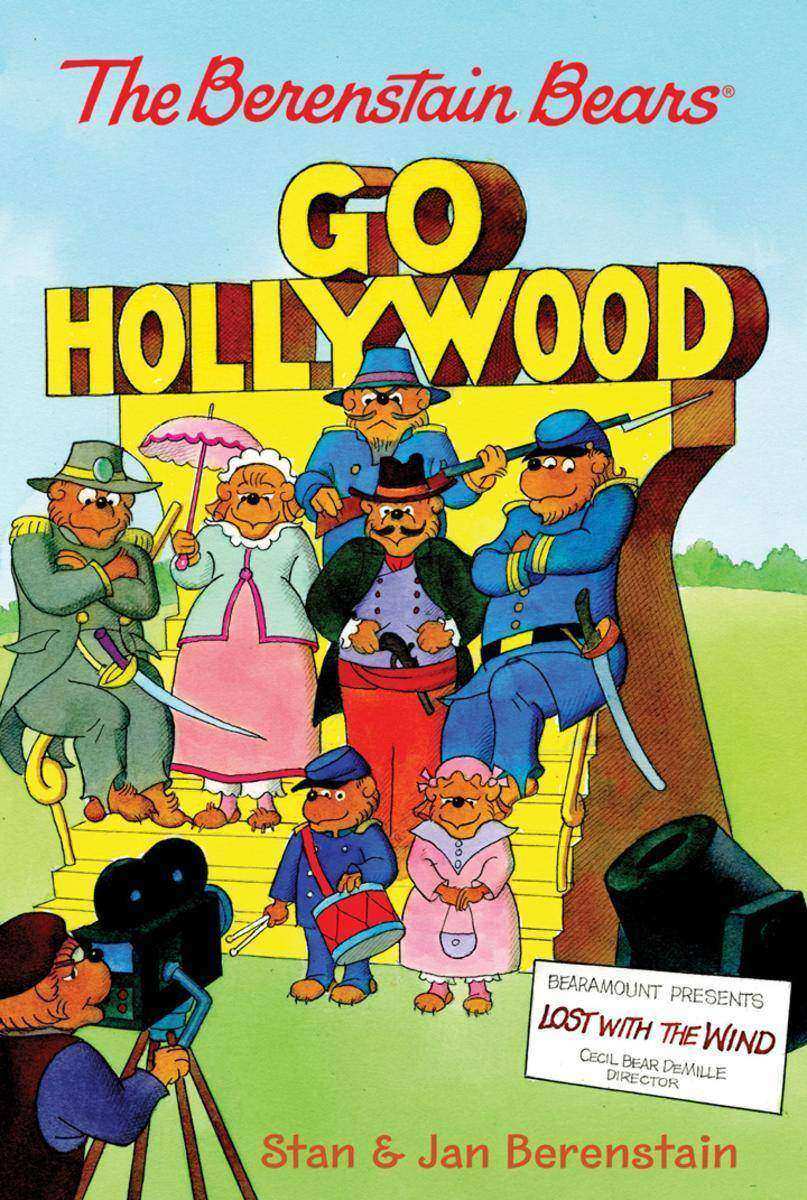
The Berenstain Bears Chapter Book: Go Hollywood
¥21.51
Lights, Camera, Action! When Hollywood comes to Bear County, everyone is star struck! Can the bears keep their wits about them while in the spotlight?The Berenstain Bears Chapter Books are the perfect next step for increasingly independent young readers.
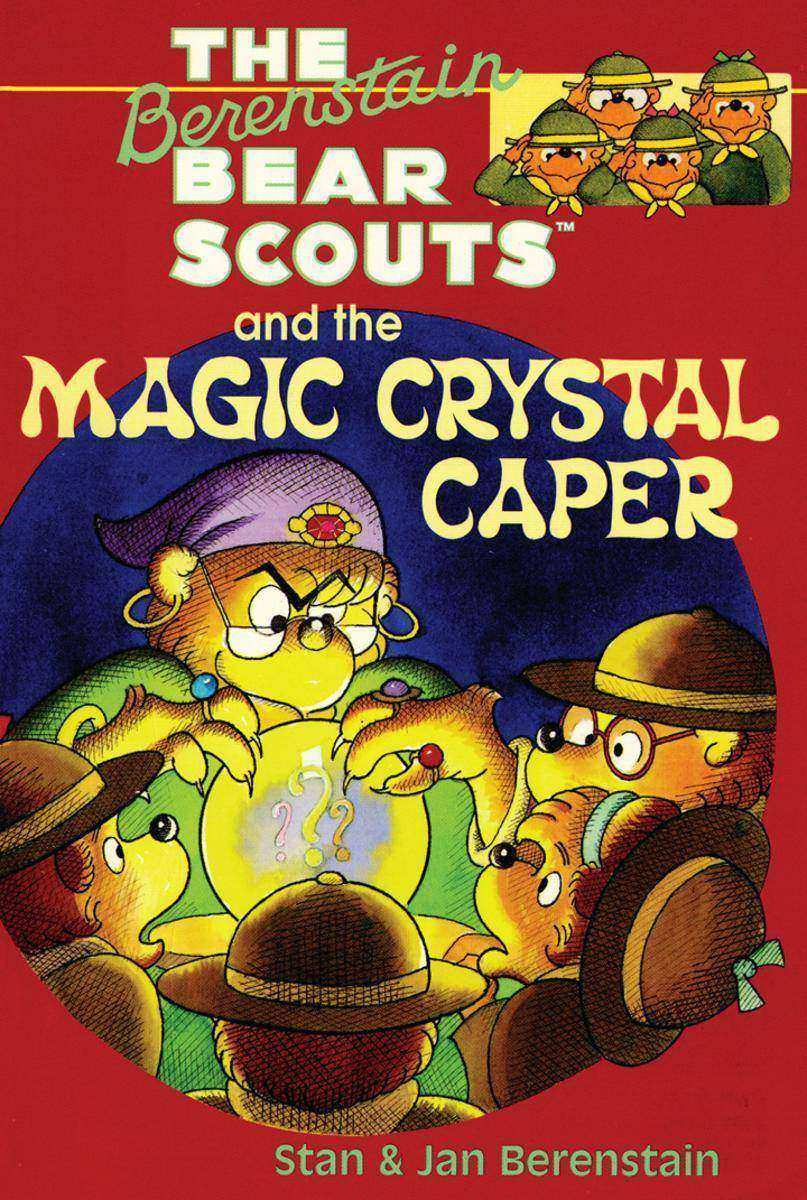
The Berenstain Bears Chapter Book: The Magic Crystal Caper
¥21.51
The Berenstain Bear Cubs are especially lucky to have Grizzy Gran as their grandmother. Using her magic crystal ball, Grizzy Gran can predict the future! That is, until Ripoff Ralph sets his sights on stealing the magic crystal ball for his own schemes. Can the Bear Scouts put an end to Ralph's shenanigans and make sure the ball remains safe?The Berenstain Bears Chapter Books are the perfect next step for increasingly independent young readers.

The Berenstain Bears Chapter Book: The Evil Eye
¥21.73
In this 100-page illustrated chapter book, Ralph Ripoff is up to his old tricks again, only this time he has teamed up with Weasel McGreed! They plan to hypnotize Bigpaw using the evil eye. Brother, Sister, Lizzy, and Cousin Fred know they must help their friend. But can they put an end to the scheme before Bigpaw is hypnotized and ordered to "swat" the Bear Scouts?The Berenstain Bears Chapter Books are the perfect next step for increasingly independent young readers.

Flat Stanley's Worldwide Adventures #12: Escape to California
¥72.93
Flat Stanley is back to save the day in the twelfth exciting Worldwide Adventures chapter book, just in time to celebrate his fiftieth anniversary! This time, we follow Flat Stanley as he explores San Francisco, California. The Lambchops are on a family vacation to San Francisco. But when Stanley saves a girl from barreling down one of San Francisco's steep hills in her wheelchair, he's shocked to find that she's actually been looking for him. The girl, Lily, is trying to perform an amazing trick that no one has done before—escaping from Alcatraz prison—and she needs Stanley's help! Can the famous flat boy help in this sticky situation?Not only will kids love going on a fun adventure with Stanley, this installment of the Worldwide Adventures series has fun, fascinating facts about San Francisco in the back of the book, and is perfect for Common Core State Standards, like multicultural adventure, plot and character development story elements, and compare and contrast.Supports the Common Core State Standards

Untamed City: Carnival of Secrets
¥43.09
Warriors Kaleb and Aya will stop at nothing to destroy their competition. But when Kaleb finds his fate entwined with that of Mallory, a seventeen-year-old human girl, he can't seem to separate the vicious Carnival contest he's entered from his sudden devotion to her. He and Aya may be prizefighters from the otherworldly Untamed City, but his strange, obsessive connection makes staying away from the witch-ruled human world, and Mallory, harder every day.All Mallory knows of the Untamed City is what her elders have told her—that it's full of debauchery and daimons looking to destroy her. But she knows she's being pulled toward Kaleb with an emotion so fierce that it's utterly foreign.The two are forced apart by Mallory's overprotective witch father, stranded by necessity between warring populations that can't coexist. But when The City's ruler raises the stakes of the Carnival's prize, there's nothing Mallory, Kaleb, or Aya can do to stop the two worlds colliding. Mallory's about to discover her true identity—and stumble into a fate she'd die to avoid.Fans of The Hunger Games will devour this tale of lush secrets, dark love, and the struggle to forge one's own destiny from the bestselling author of Wicked Lovely, Melissa Marr.(Formerly published as Carnival of Souls)

Circle of Heroes
¥38.72
Aldwyn, a street-smart alley cat, pretended he had telekinetic powers so young wizard Jack would chose him as a familiar. Aldwyn then learned that he and two other familiars—Skylar the blue jay and Gilbert the tree frog—were destined to undertake a perilous quest to defeat Paksahara, an evil hare who’d been familiar to the queen.?In Circle of Heroes, the third book of The Familiars series for middle-grade readers, Paksahara and her undead animal army control the Shifting Fortress. Aldwyn and his friends have to recapture it to return magic to the queendom of Vastia.?Fans of The Guardians of Ga’hoole series and Erin Hunter’s Warriors books will love the mix of humor, magic, and animal adventure story in Circle of Heroes by Adam Jay Epstein and Andrew Jacobson.
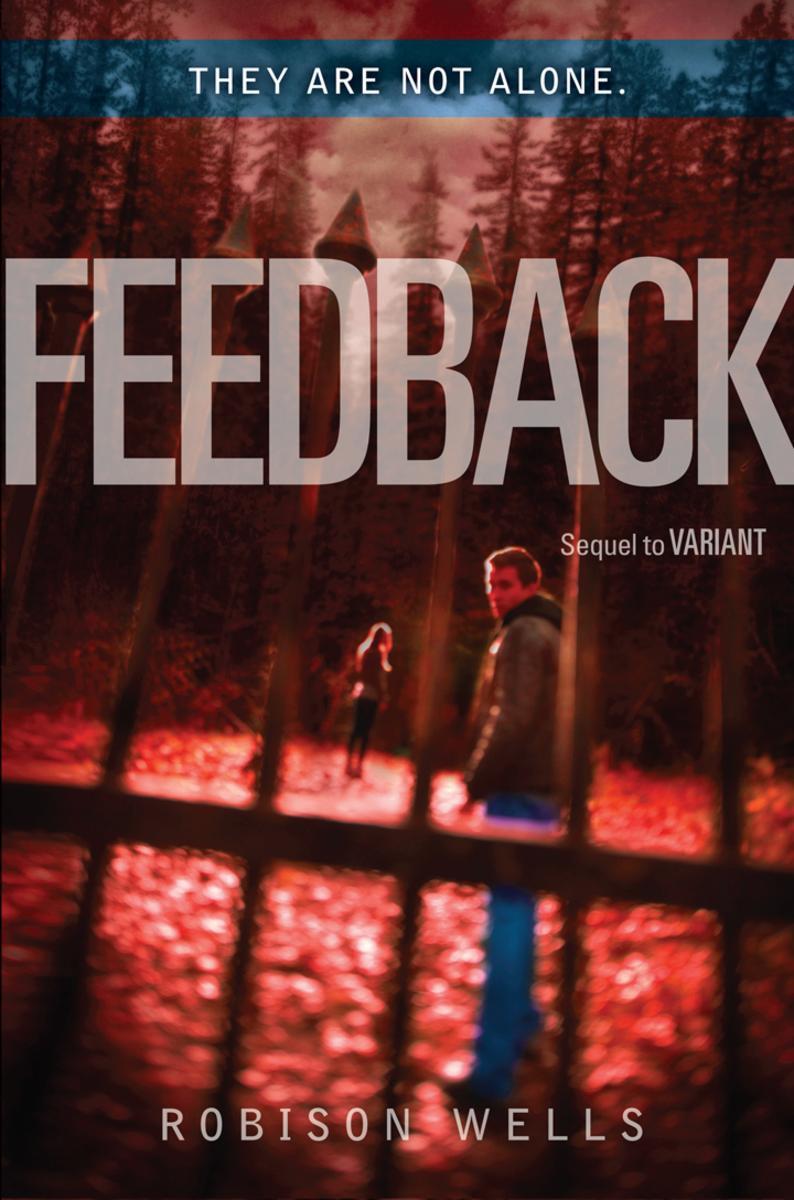
Feedback
¥60.87
Perfect for fans of James Dashner's The Maze Runner, Feedback is the heart-stopping sequel to Variant—which Pittacus Lore, author of I Am Number Four, praised as "an intense journey with some of the most shocking twists and turns I've ever read."Benson Fisher escaped from Maxfield Academy's deadly rules and brutal gangs. He thought that the worst was over.But now Benson is trapped in a different kind of prison—a town filled with familiar faces. Classmates from Maxfield who Benson had seen die. Friends he was afraid he had killed.They are all pawns in the school's twisted experiment, held captive and controlled by an unseen force. And while Benson struggles to figure out who, if anyone, can be trusted, he discovers that Maxfield Academy's plans are darker than anything he imagined—and they may be impossible to stop.

Hidden
¥55.33
Fans of Maggie Stiefvater and Colleen Houck will love this epic tale of forbidden romance and nail-biting action from New York Times bestselling author Sophie Jordan.In the climactic finale to the steamy Firelight series, Jacinda must fight to save her life, her love, and all of her kind.If Jacinda were to follow the wishes of her community, she'd happily settle down with Cassian, the prince of her pride. But she just can't. She's in love with Will, a human boy who comes from a family of hunters. Their relationship breaks the most sacred rule and endangers everyone she cares about. Now Jacinda, Will, and Cassian fight back against the hunters and their shadowy allies who would destroy them all. . . .

A Long Way from You
¥49.79
For too long, Kitsy has had to satisfy her dreams of becoming a real artist by giving her friends makeovers before prom. So when her best friend Corrinne's family offers to sponsor her for a summer art course in New York City, Kitsy bids a temporary good-bye to Texas to say hello to the West Village.Between navigating the subway and the New Yorkers—namely, the Art Boy who has a nice trick of getting under her skin—Kitsy knows that this summer is going to be about a lot more than figure drawing.

The Turning
¥101.00
A dark house.An isolated island.Strange dreams and even stranger visions . . . Jack is spending the summer on a private island far from modern conveniences. No Wi-Fi, no cell service, no one else on the island but a housekeeper and the two very peculiar children in his care. The first time Jack sees the huge black mansion atop a windswept hill, he senses something cold, something more sinister than even the dark house itself.Soon, he feels terribly isolated and alone. Yet he is not alone. The house has visitors—peering in the windows, staring from across the shore. But why doesn't anyone else see them . . . and what do they wantAs secrets are revealed and darker truths surface, Jack desperately struggles to maintain a grip on reality. He knows what he sees, and he isn't crazy. . . . Or is he?From nationally acclaimed author Francine Prose comes a mind-bending story that will leave you realizing how subtle the lines that separate reality, imagination, and insanity really are.

Killing Orders
¥70.10
V.I.'s battleaxe Aunt Rosa is under investigation by the FBI and SEC after counterfeit stock certificates were found at St. Albert's Priory, where she serves as treasurer. As malicious as her aunt is, V.I. knows she's not dishonest, so V.I. vows to protect her from taking the fall. But V.I. starts questioning the strength of her family ties when a menacing voice on the phone threatens to throw acid into her eyes if she doesn't butt out. The stakes are high as she begins to sniff out a connection between Chicago's most powerful institutions: the Church and the Mob.

Ethan Gage Collection #2
¥269.68
From master storyteller William Dietrich come books 4-6 in his bestselling Ethan Gage adventure series: The Barbary Pirates, The Emerald Storm, and The Barbed Crown.

The Moon Riders
¥101.00
Myrina has prepared for thirteen years to join the Moon Riders—learning the sacred dances, the art of using a weapon, and listening to her mother and grandmother's tales of their time spent with the Moon-maidens. Finally, the day arrives when she will leave her family and devote herself to the Old Woman, Atisha, and her tribe of fearless young warriors.No sooner do Myrina and the Riders leave camp when a stowaway is discovered: Cassandra, the troubled young princess of Troy. Myrina is skeptical of Cassandra's "visions" of death and destruction in Troy; and yet when her predictions begin to come true, she and the other Moon Riders have no choice but to get involved. The events that unfold as the Trojan War wages on will affect Myrina, Cassandra, and the Moon Riders in unimaginable, unforgettable ways.Acclaimed British author Theresa Tomlinson expertly brings to life the legend of the Amazons and sets it against a backdrop of one of the most mythic, imagination-inspiring battles in all of history.

Harper
¥69.90
In this latest adventure by New York Times bestselling author William Dietrich, Ethan Gage is out to foil Napoleon's coronation as emperor, play double agent between France and England, and turn the tide of war—while attempting to save his own life and his marriage.Gage fought beside Napoleon Bonaparte in Egypt and was his agent in Italy, America, and Greece. But this relationship, which at the best of times was uneasy, has gone sour, and now Ethan wants to make Napoleon pay for kidnapping his son, Harry, and nearly killing his wife, Astiza.Smuggled into France with a beautiful royalist agent, Gage is determined to thwart Bonaparte's ambitions to take Europe. Surprises abound as a conspiracy collapses, Astiza reappears at Gage's side, and agents on all fronts try to recruit Ethan to their cause. Desperate, he devises a mad plan to sabotage Napoleon's coronation by replacing the power-hungry emperor's crown of golden laurel with a religious relic—the Crown of Thorns purportedly worn by Christ at his crucifixion. It is a scheme that requires a daring theft, perfect timing, and trust among the plotters; when it goes awry, Gage is soon on the run to England.There Ethan joins a circle of brilliant renegades, including Robert Fulton, designer of the first submarine; rocket artillery pioneer Sir William Congreve; and smuggler Tom Johnstone. As two empires face off at sea, Gage is plunged into the decisive and lethal Battle of Trafalgar, trapped on board a French ship as Nelson's Victory bears down on him.Moving from the glittering boulevards and squalid back alleys of Napoleonic France to the high seas of Regency England, filled with romance, danger, intrigue, and glory, The Barbed Crown is a thrilling romp that sees Ethan Gage once again embroiled in European history . . . and the fate of the modern world.

The Three Emperors
¥69.90
Venice: Ethan Gage has escaped after surviving the naval battle of Trafalgar. His plan: to circumvent the French Empire and rescue his wife, Astiza, and son, Harry, from imprisonment by a ruthless mystic who seeks revenge for disfigurement, and from an evil dwarf alchemist who experiments with the occult on Prague's Golden Lane.Using death as his ruse, Gage seeks an unlikely ally in the Jewish Napoleonic soldier Gideon Mandel, who saves Ethan's life at Austerlitz, and Gideon's father, Aaron, a rabbi whose knowledge of the legends of the Golem adds another layer to the hunt for the Brazen Head. The three must decipher clues from Durendal, the sword of Roland. Meanwhile, Astiza uses her own research to concoct an explosive escape and find a lost tomb, with their tormentors in relentless pursuit.William Dietrich skillfully weaves intrigue, magic, romance, and danger in a historical thriller that sprints from the fury of the Napoleonic wars to the mystical puzzles of Central Europe—where a medieval machine promises power over the future.

The Promise of Stardust
¥88.56
Matt Beaulieu was two years old the first time he held Elle McClure in his arms, seventeen when he first kissed her under a sky filled with shooting stars, and thirty-three when they wed. Now in their late thirties, the deeply devoted couple has everything—except the baby they've always wanted.When a tragic accident leaves Elle brain-dead, Matt is devastated. Though he cannot bear losing her, he knows his wife, a thoughtful and adventurous scientist, feared only one thing—a slow death. Just before Matt agrees to remove Elle from life support, the doctors discover that she is pregnant. Now what was once a clear-cut decision becomes an impossible choice. Matt knows how much this child would have meant to Elle. While there is no certainty her body can sustain the pregnancy, he is sure Elle would want the baby to have a chance. Linney, Matt's mother, believes her son is blind with denial. She loves Elle, too, and insists that Elle would never want to be kept alive by artificial means, no matter what the situation.Divided by the love they share, driven by principle, Matt and Linney fight for what each believes is right, and the result is a disagreement that escalates into a controversial legal battle, ultimately going beyond one family and one single life.Told with sensitivity and compassion, The Promise of Stardust is an emotionally resonant and thought-provoking tale that raises profound questions about life and death, faith and medicine—and illuminates, with beauty and grace, the power of love to wound . . . and to heal.
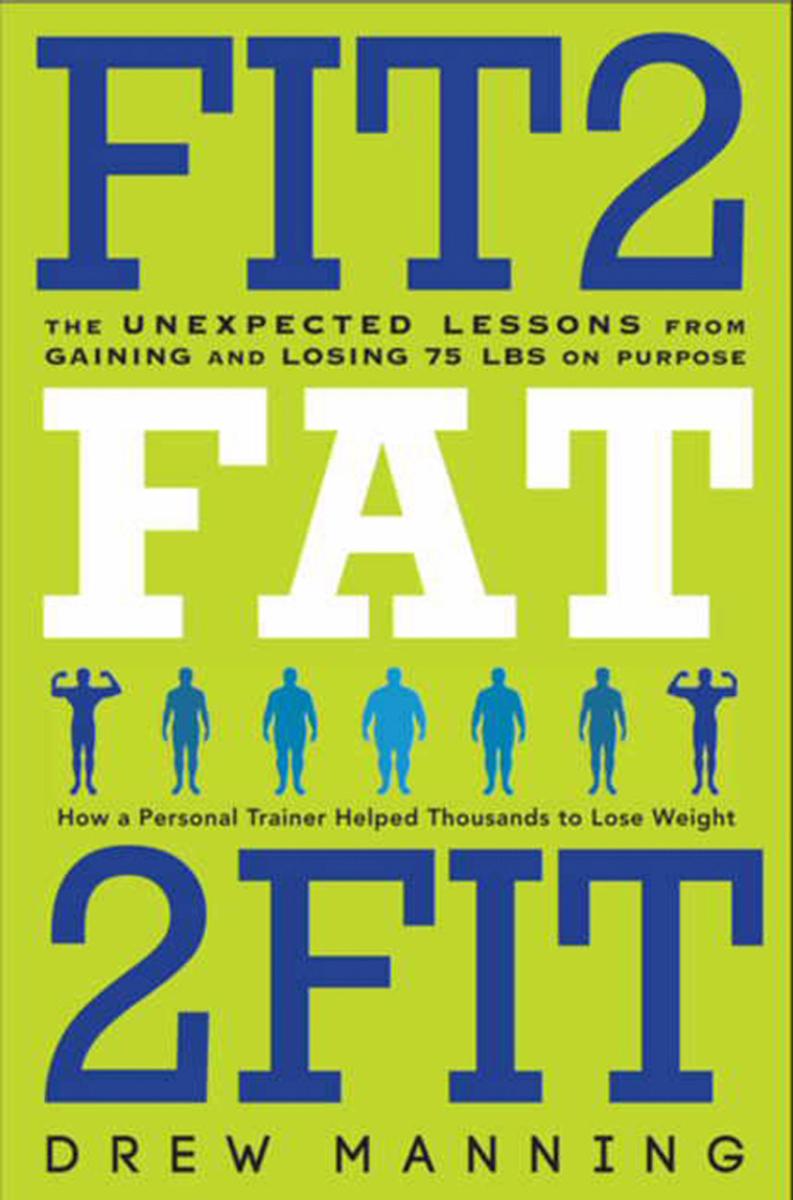
Fit2Fat2Fit
¥83.03
Drew Manning, a natural fitness junkie and devoted personal trainer, had never been overweight in his life. He never craved junk food or missed an opportunity to work out. Yet despite his obsession with fitness, he failed to help his clients reach their goals. Something had to give. Manning needed to understand what it was like to be on the other side—spend a few months in his clients' shoes or, rather, size. For six months, Manning radically let himself go. He stopped exercising and ate nothing but the typical American diet of fast and processed foods. Not surprisingly, he started to gain weight. Manning made national news when he posted a blog revealing that he had gained more than 60 pounds (he ended up gaining 75). In only half a year, the out-of-shape trainer-turned-blogger had gained more than he ever expected—and not just in pounds. Manning devoted the next six months to losing the weight as quickly as he had gained it. The lessons he learned were priceless, as he had now experienced both sides of the weight-loss battle. What started as a physical challenge became an emotional and mental wake-up call. In Fit2Fat2Fit, Manning reveals the practical takeaways and profound in- sights of his yearlong journey. With startlingly honest stories, concrete easy-to-implement strategies, recipes, exercises, workout routines, meal plans, and much more, the reader is fully equipped to achieve any weight-loss goal.




 购物车
购物车 个人中心
个人中心



